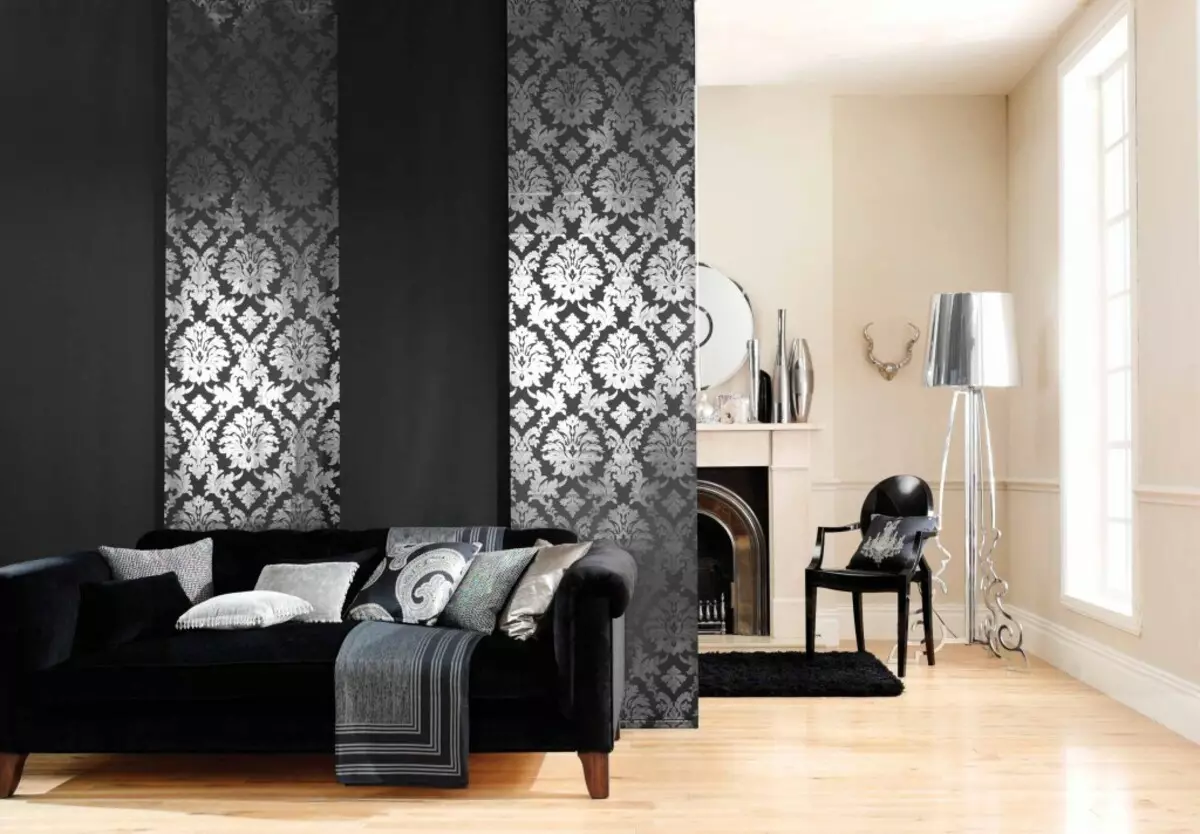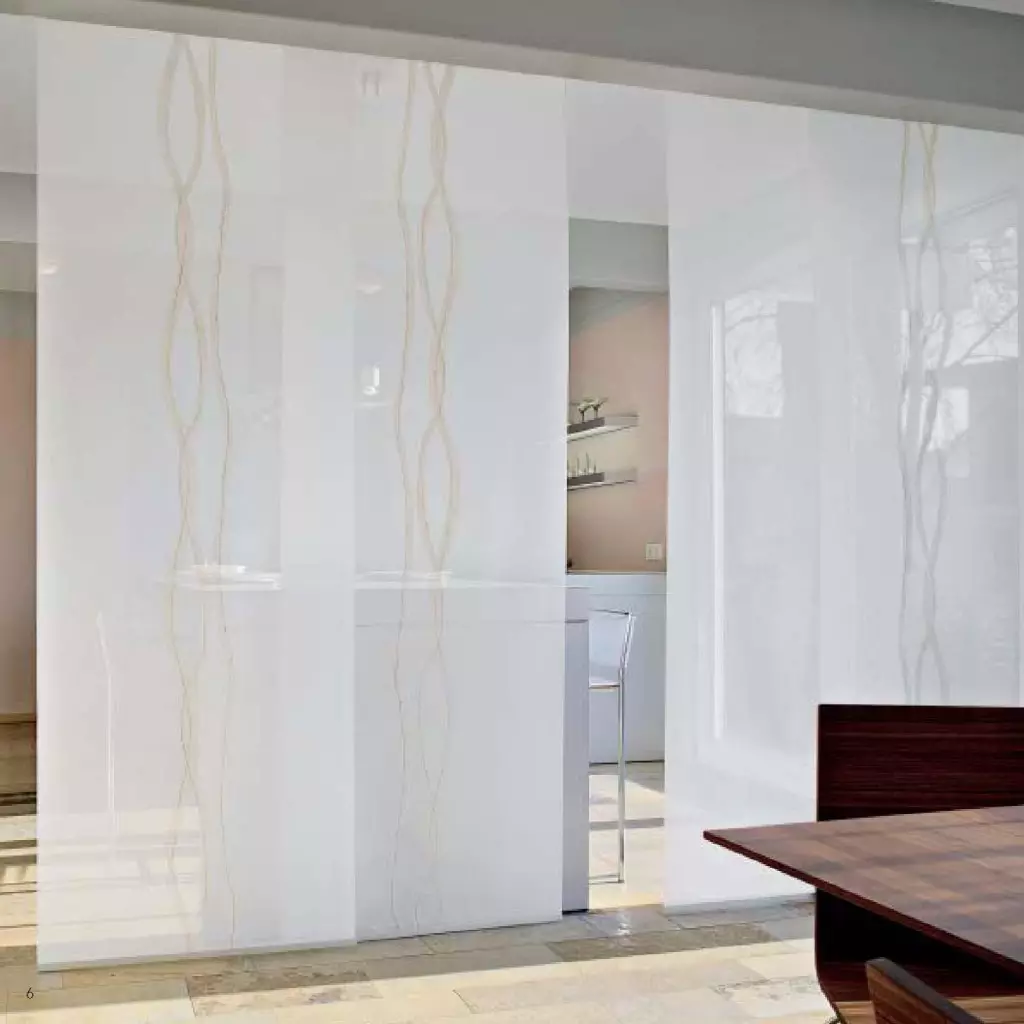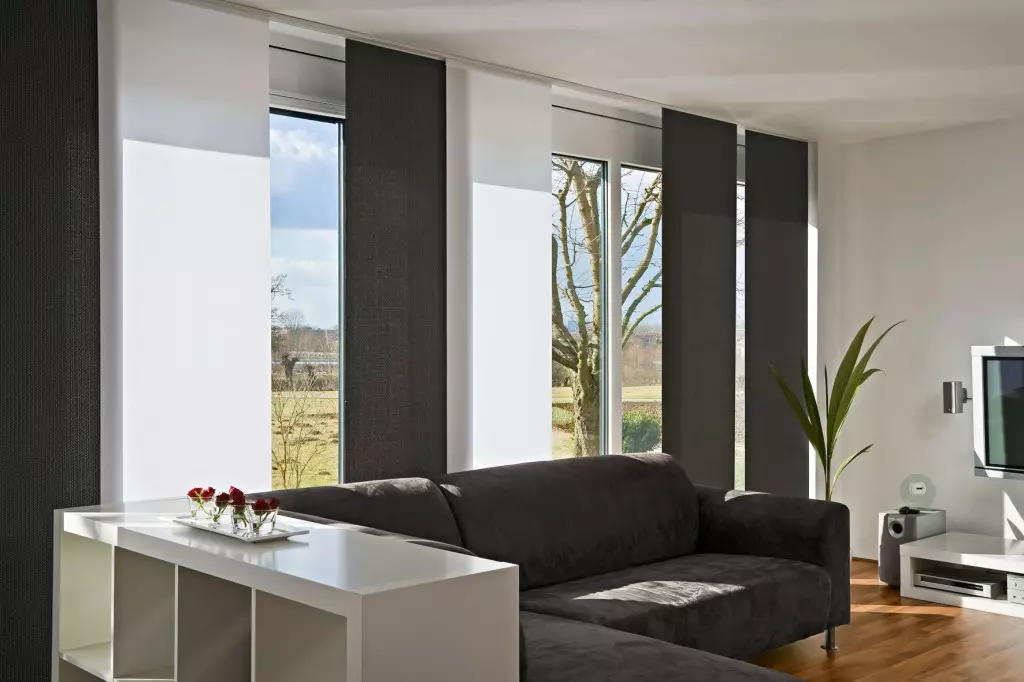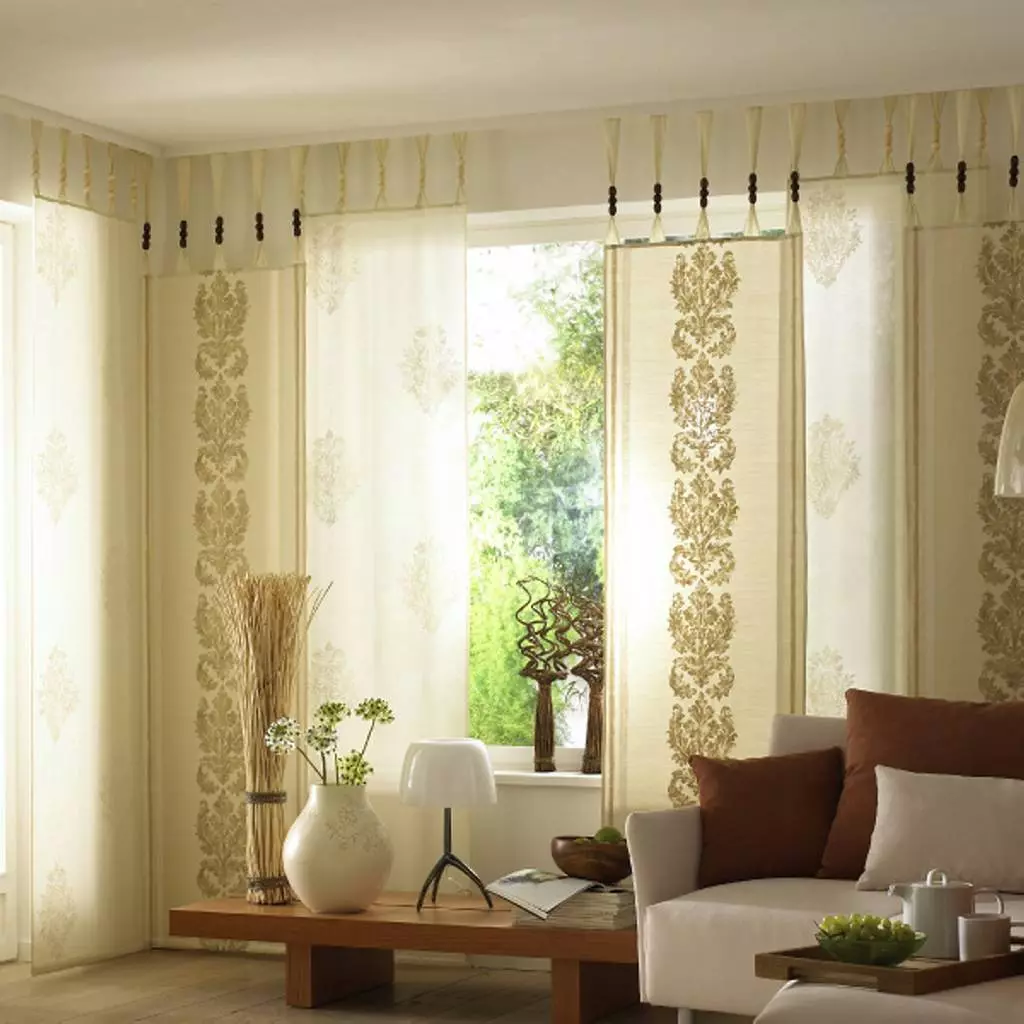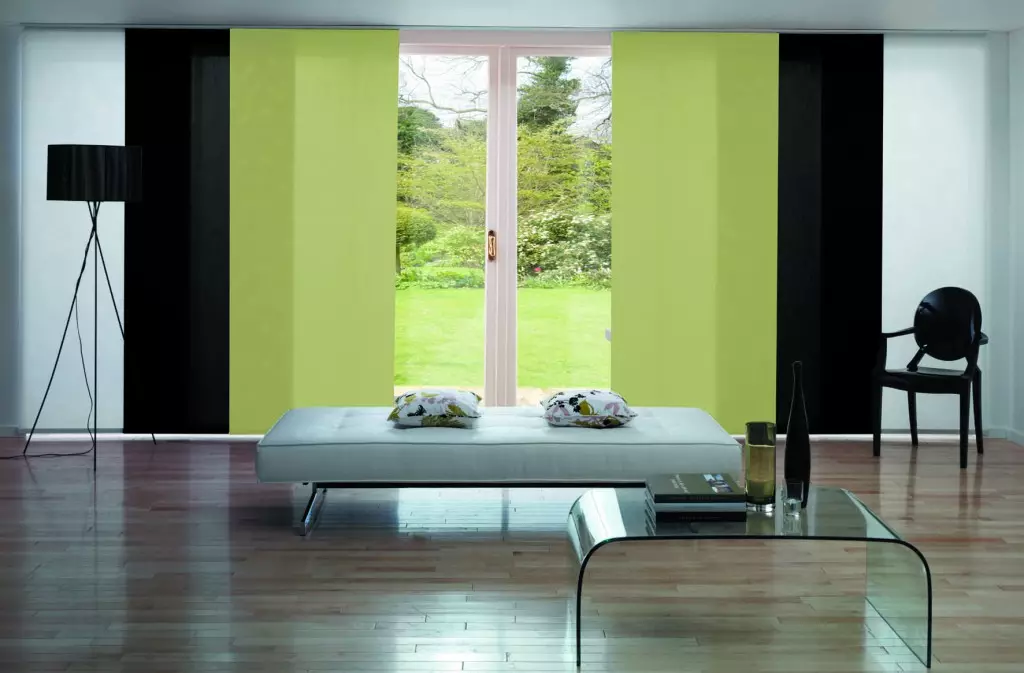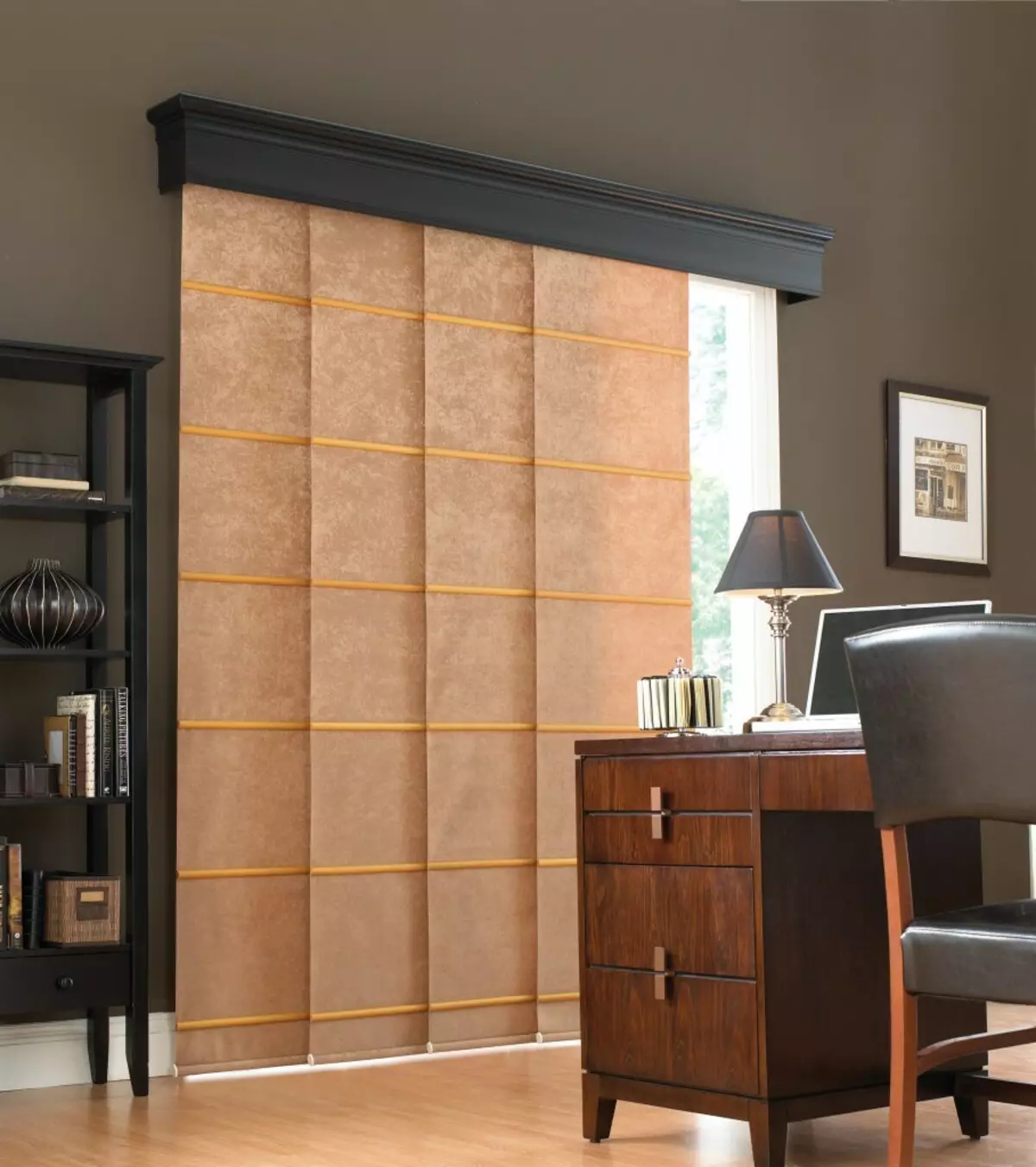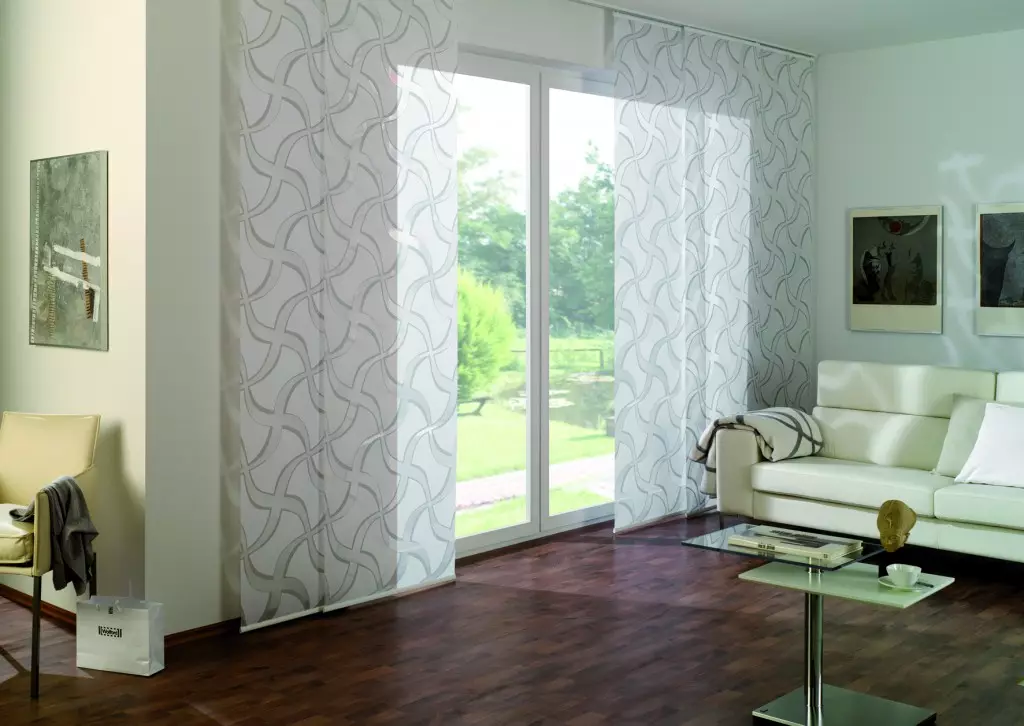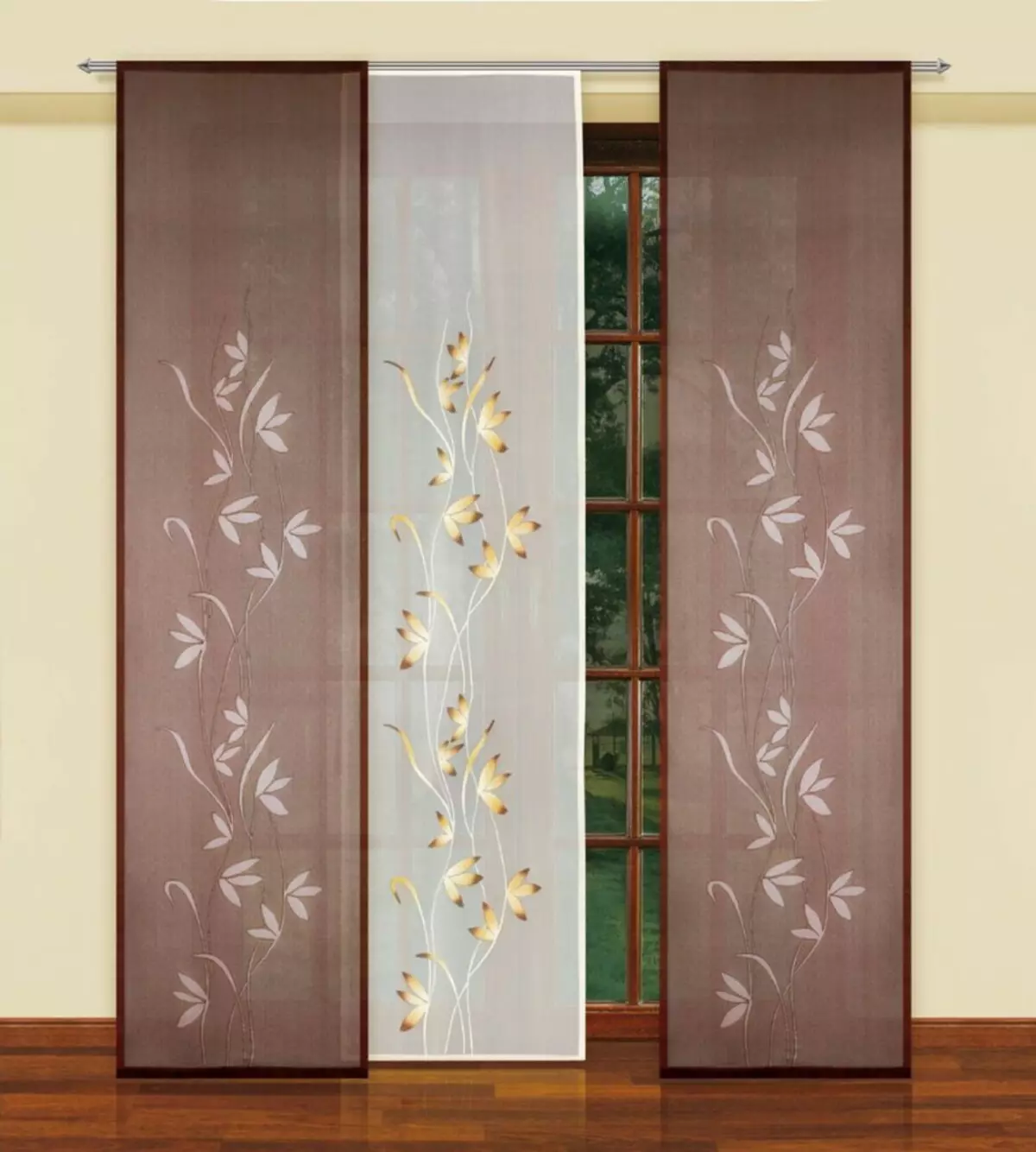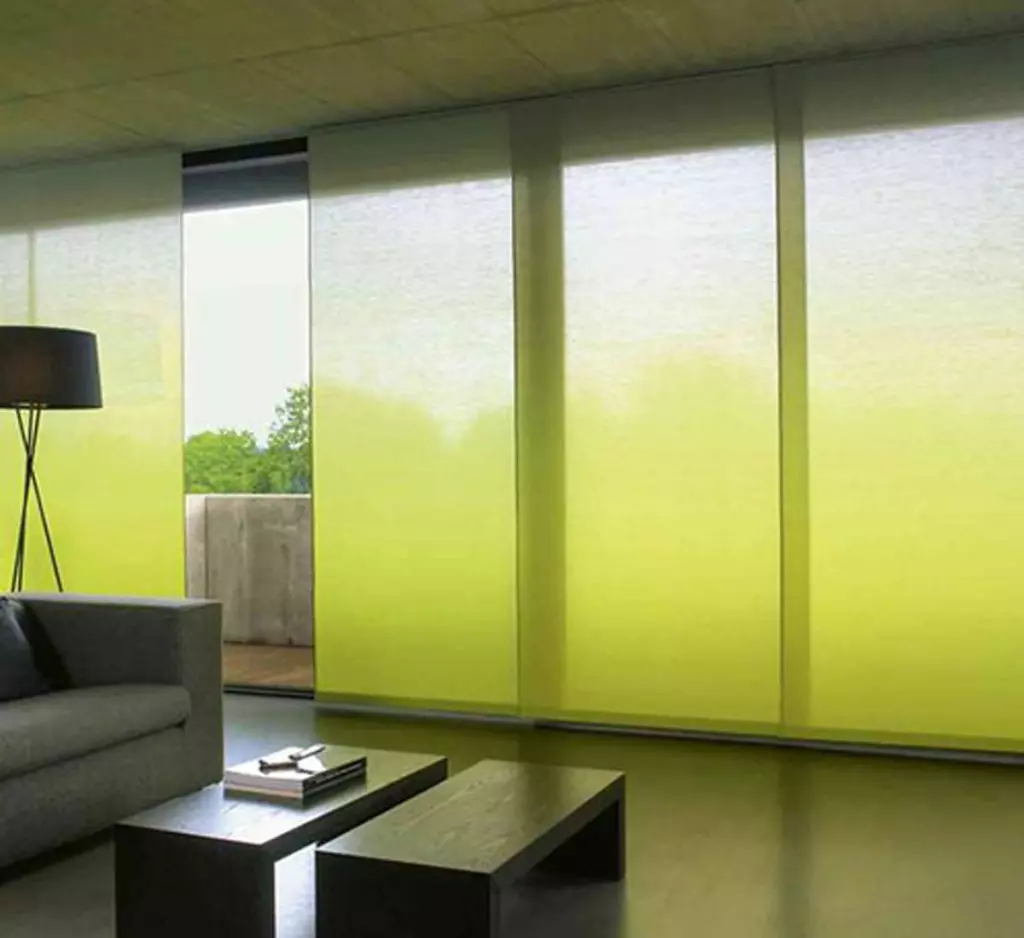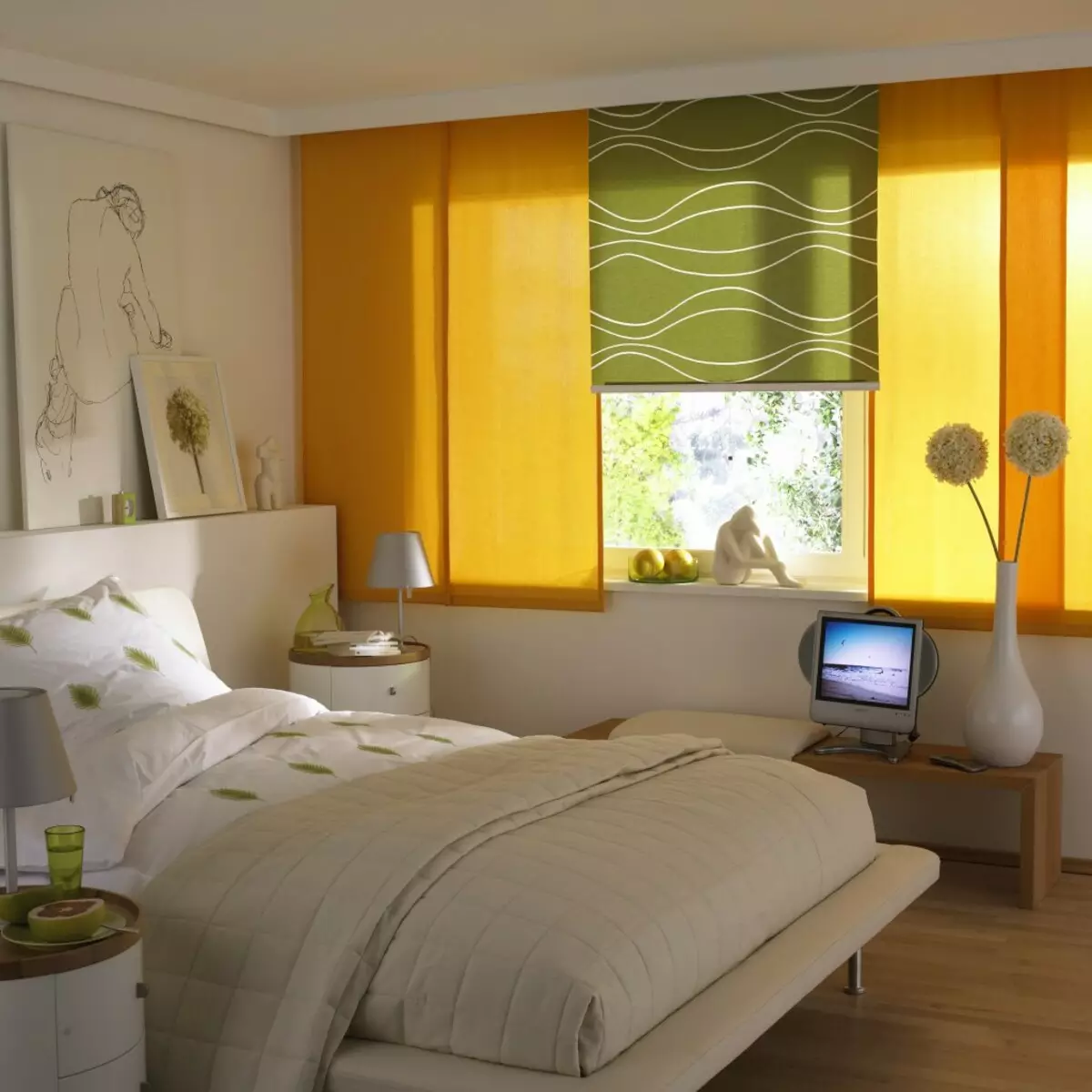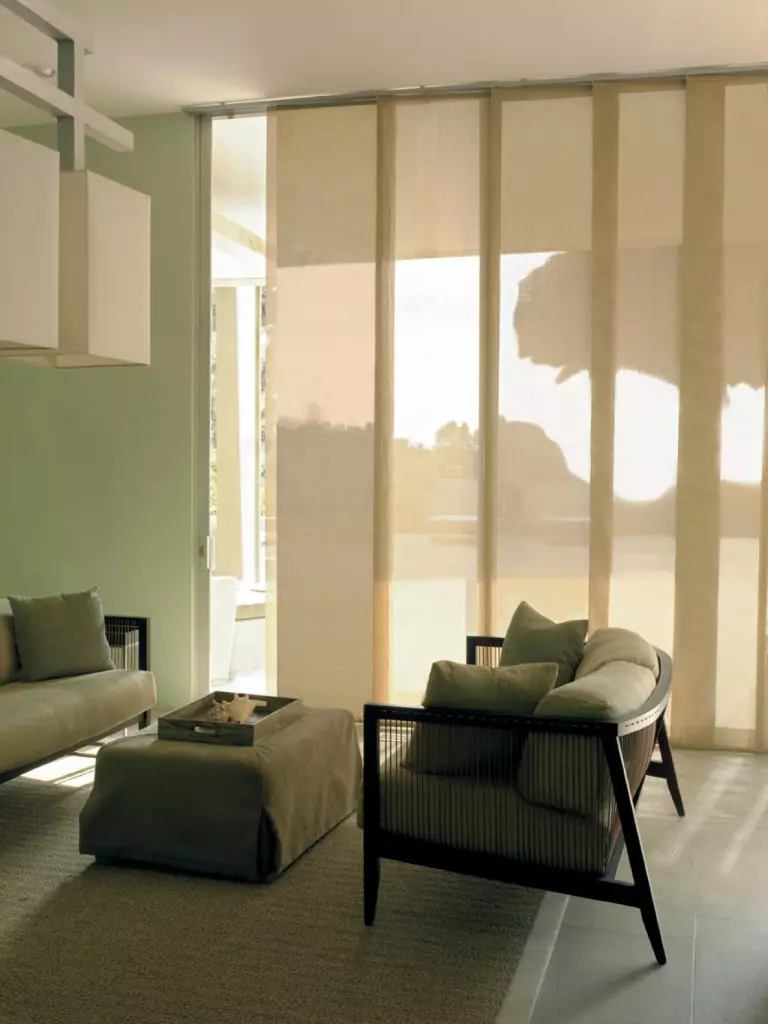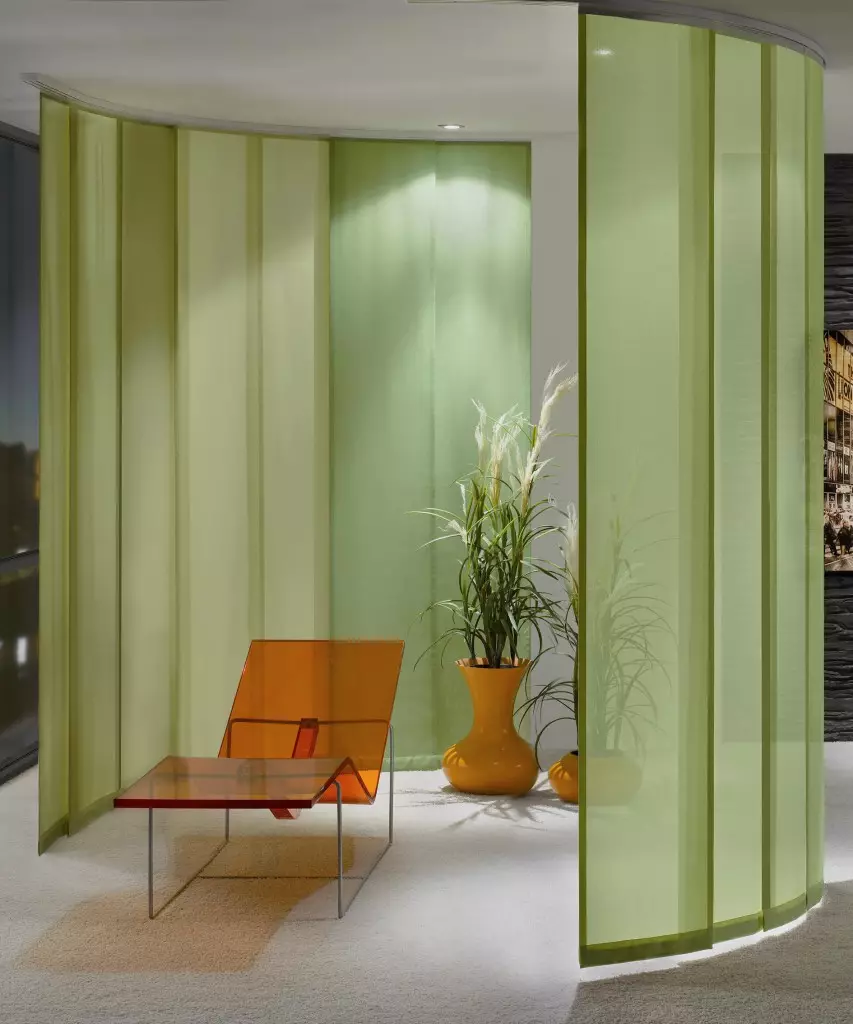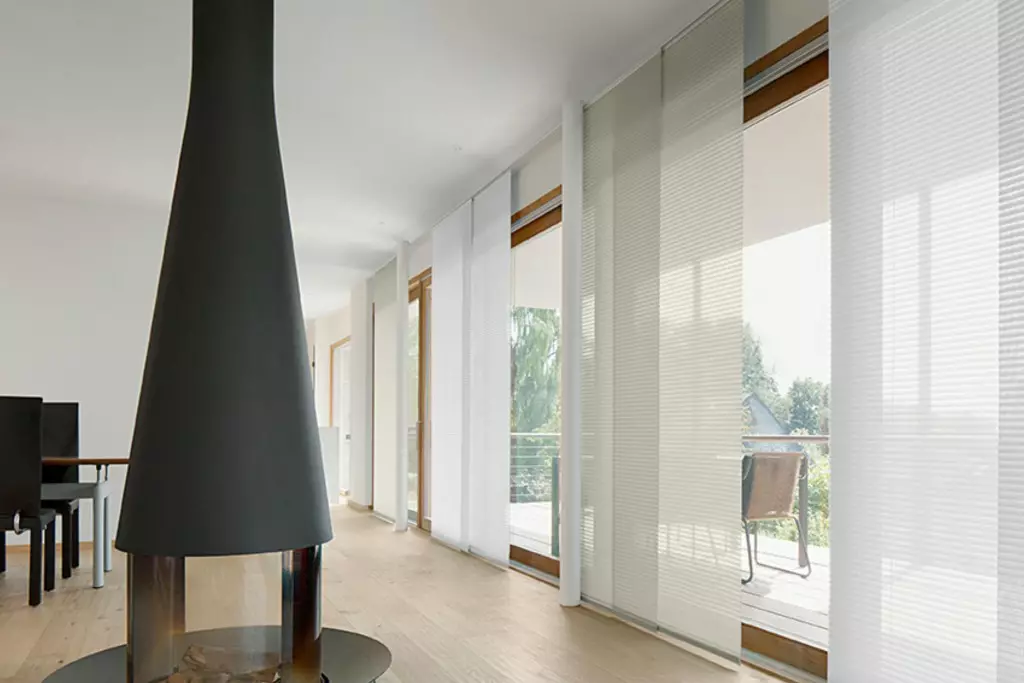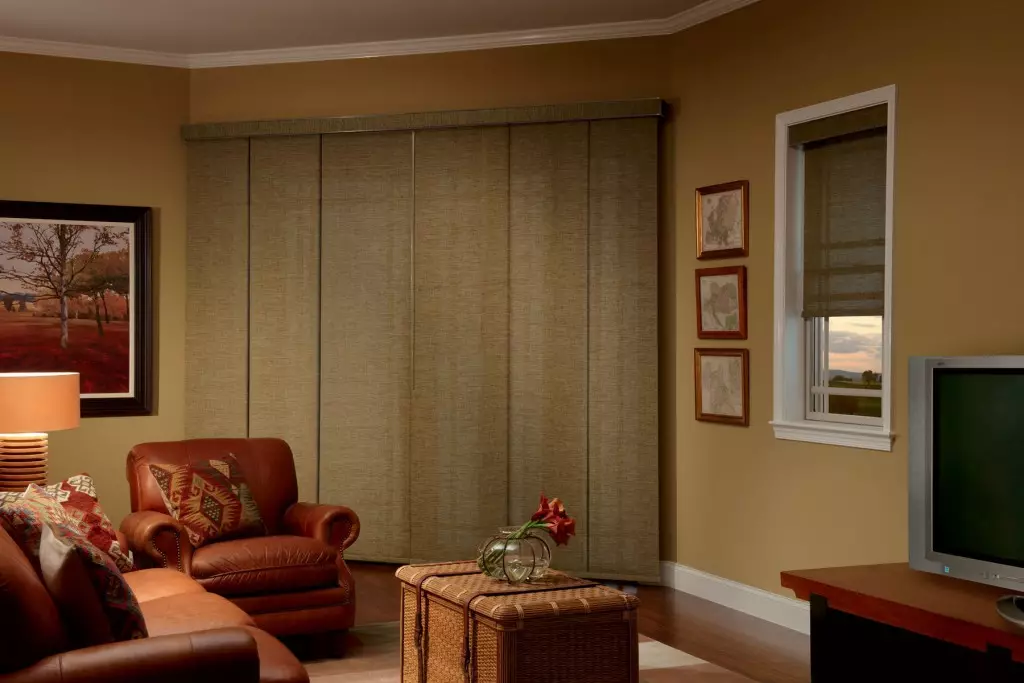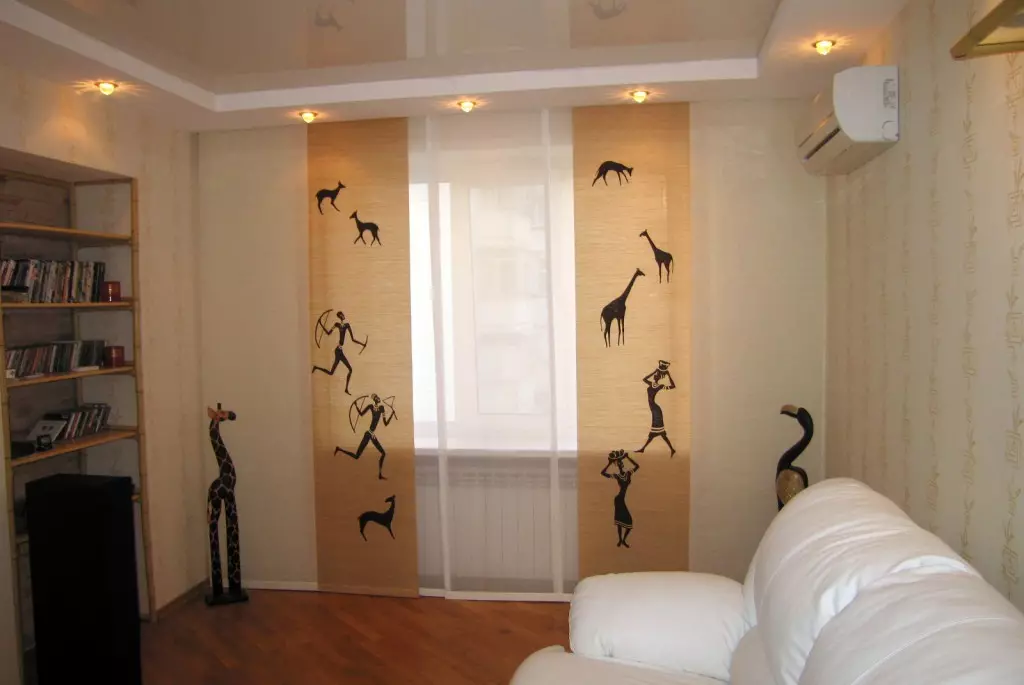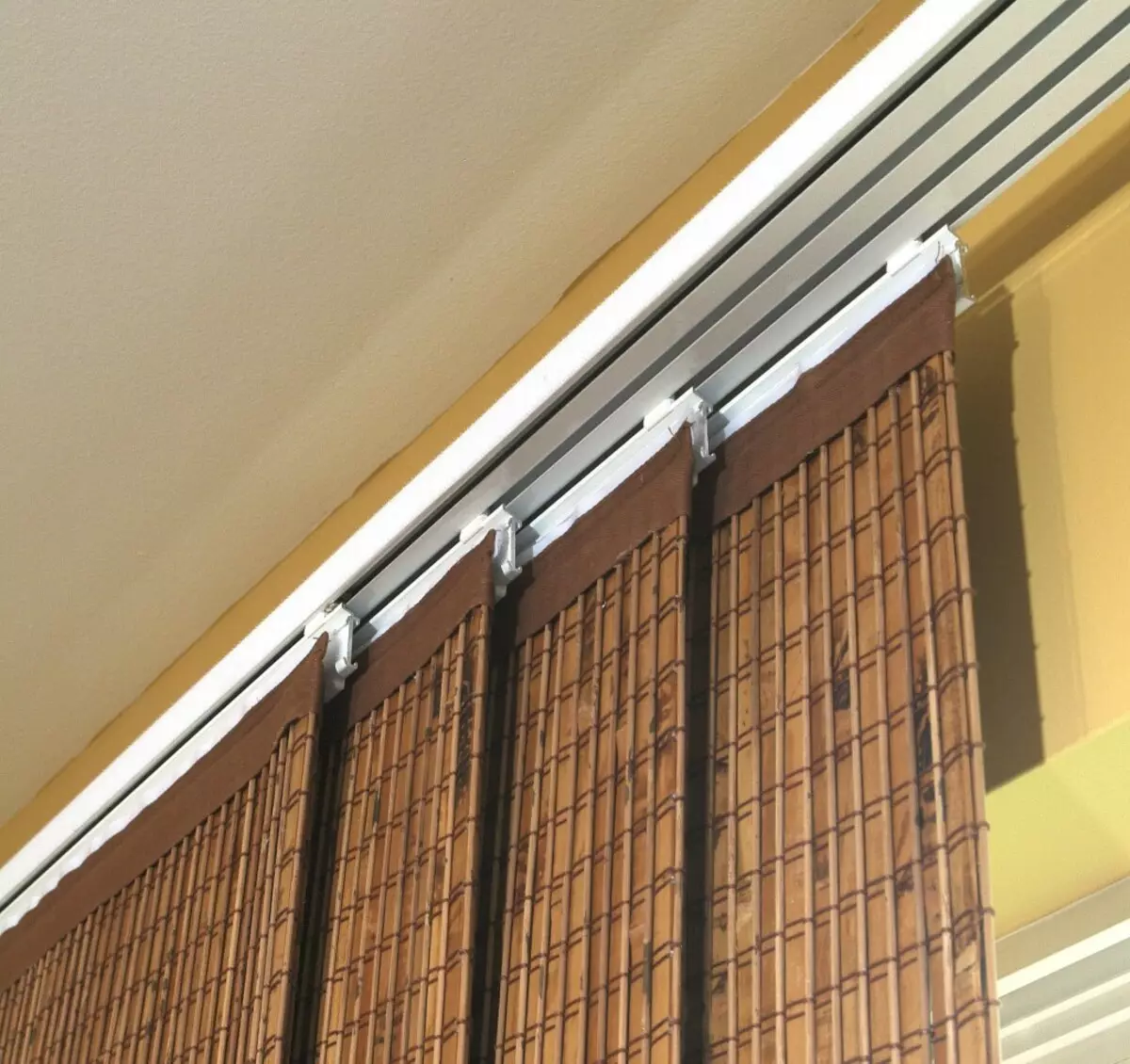Japanese curtains (differently - panel curtains, curtain screens) - sliding structures, the appearance of which the world is obliged to be small in the area of the Japanese residents. They found a solution that fully appropriate to their mentality is concise and elegant.
Initially, the panels were intended to break the large space, on small compartments, each with its purpose. Hang them on the windows - a European idea.
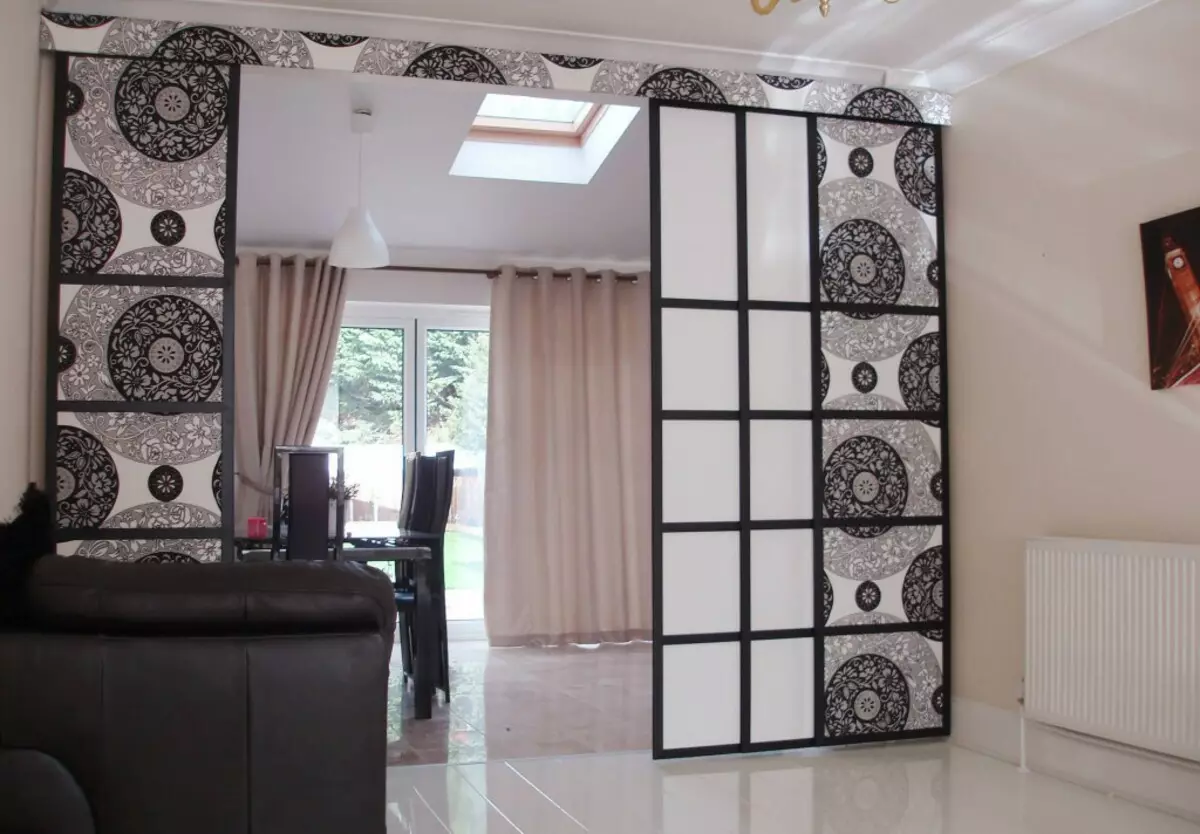
Japanese curtains are straight tissue tissue tissue up to 1.5 m, moving on the side by stationary guides (one or more) - it looks like vertical blinds or doors of the wardrobes. Thin and lightweight fabric are additionally stretched on the frame so that there are no folds, the dense is simply dried from below. Eaves are attached to the ceiling, walls, floor, peculiar doorway.
The panel curtains never happen folds, decorative cords, bows, fringe and other accessories.
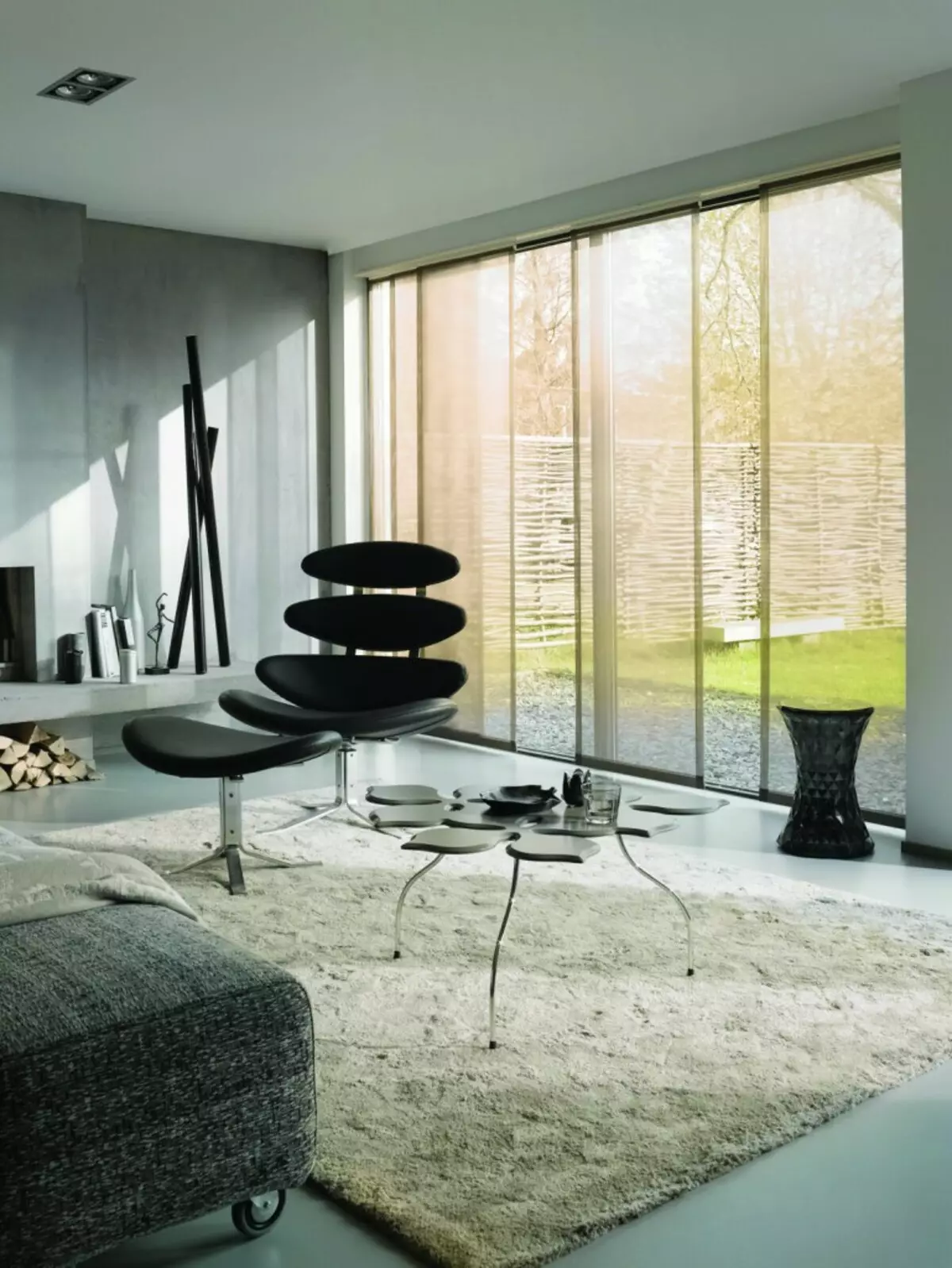
By universality with them, there are little compared - of which the window curtains, doors, walls and shirms are made. Having rearranged a pair of panels, it is possible, putting a minimum of effort, to achieve noticeable changes in the interior.
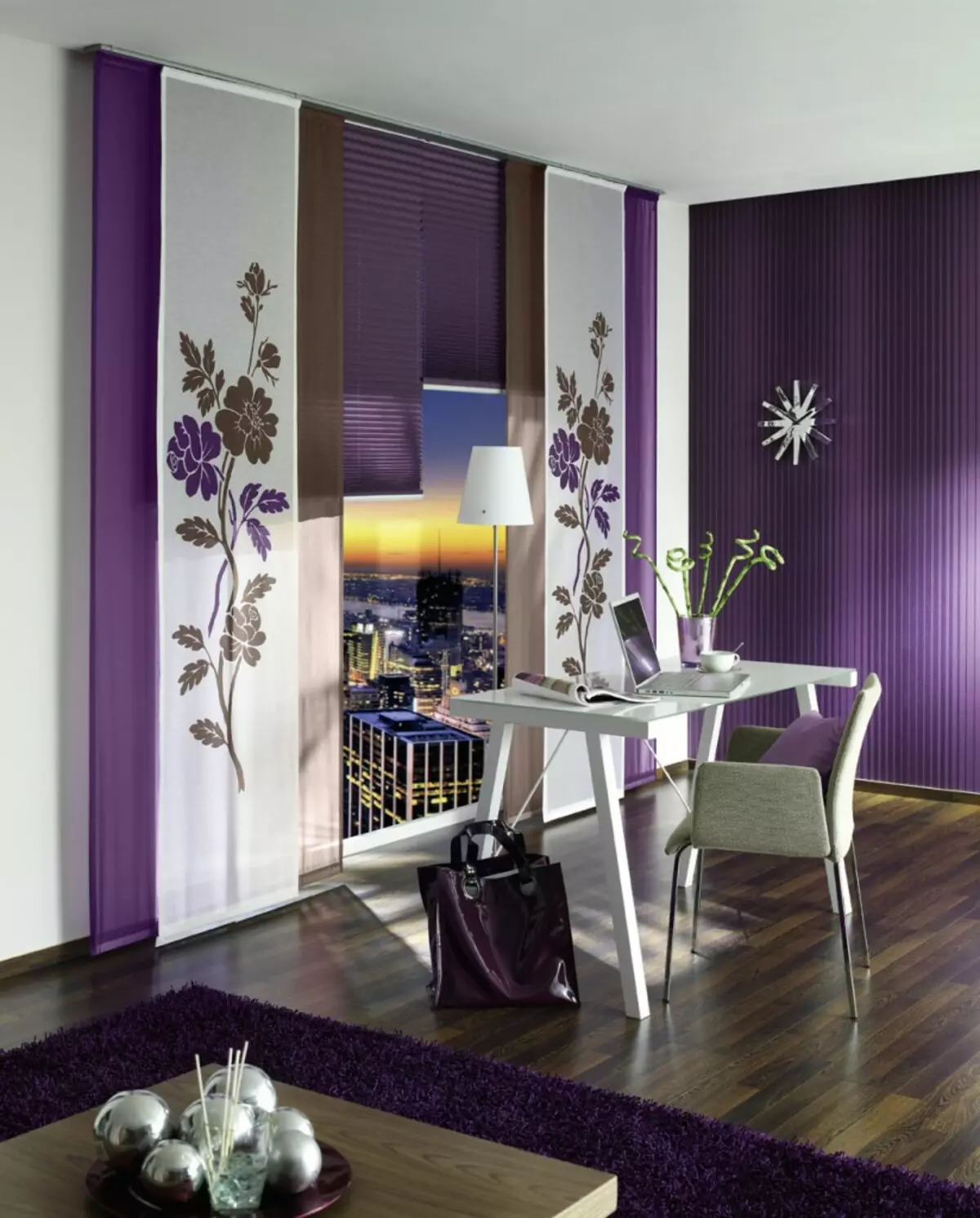
Pros and cons of Japanese curtains
Curtain screens have indisputable advantages:
- No restrictions in the choice of type and color of the fabric.
- The lack of dust, dirt, inevitably accumulating in folds and drapes. Easy to care.
- No complex devices are required for installation. Remove the curtains are also easy.
- Fabrics on Japanese curtains are required several times less than all other options. With sewing, even beginners will cope. This is a significant savings.
- For a sunny side window, this is the best solution. The entire area is closed, light from a sharp and blinding turns into a soft and scattered.
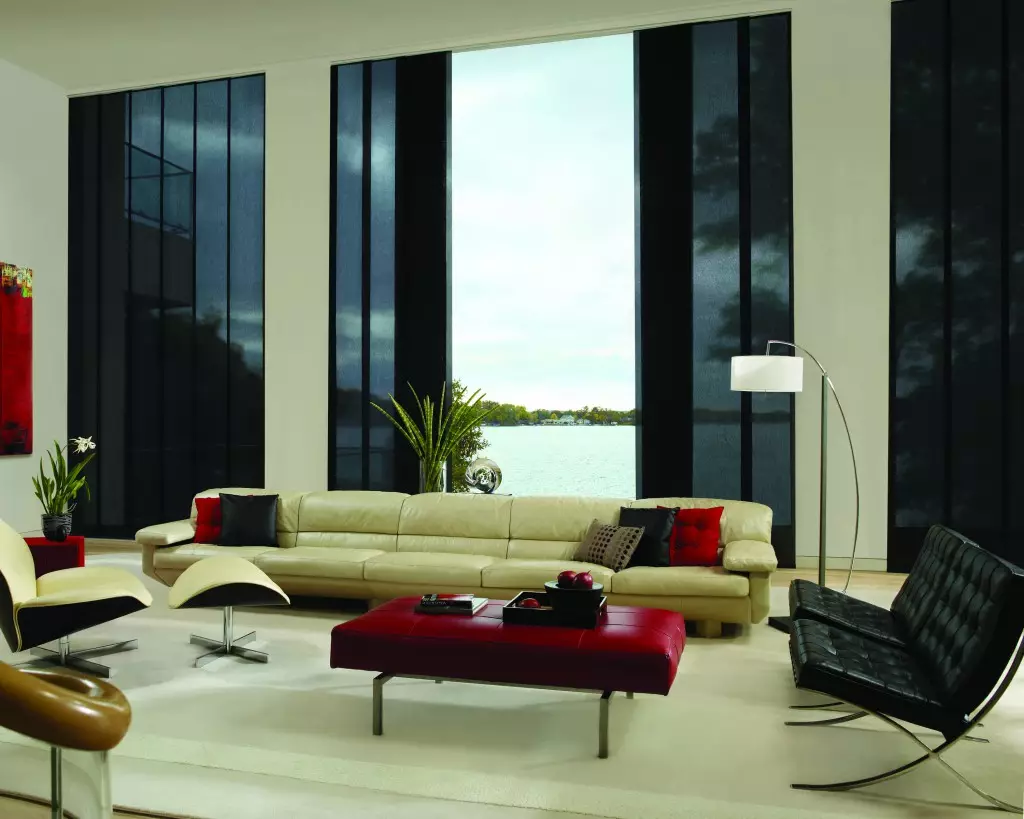
The only drawback (Main "Raisin") is strict requirements for form. You have to choose between a rectangle and square.
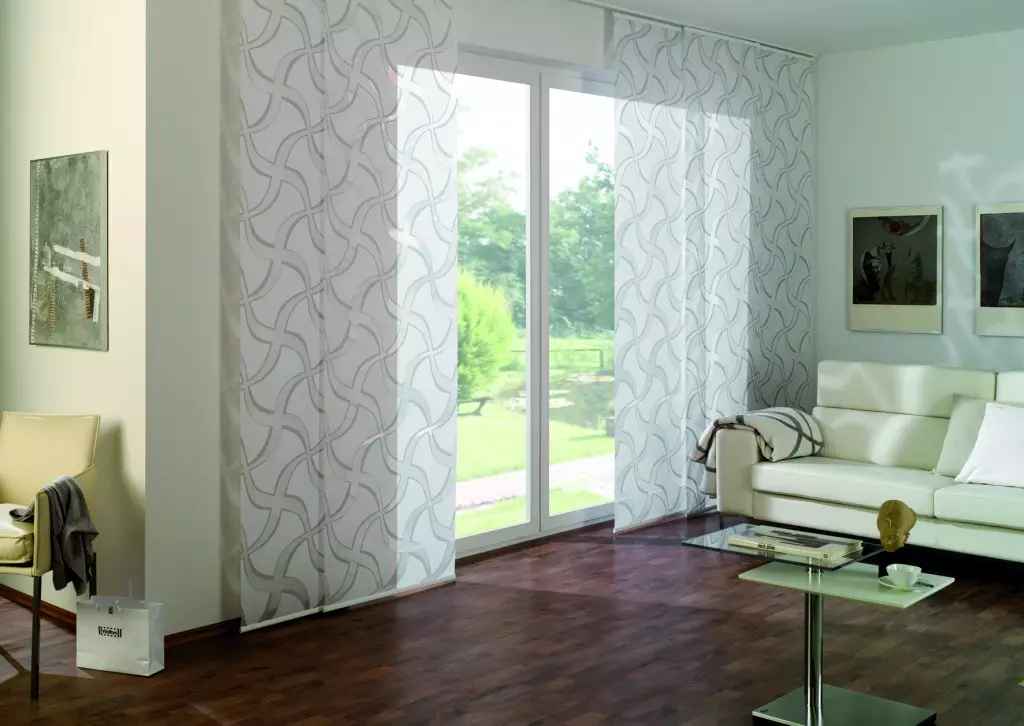
Fabric for Japanese curtains
Classic curtains panels are made of natural materials, and this may be not only fabric. The panels are cut out of dense rice paper, weave from straws, sisal, jute, collected from bamboo plates. Initially, they were monophonic and carried a purely functional load.
At the moment, there is no restrictions on the choice of material, unless you want to recreate an authentic style.
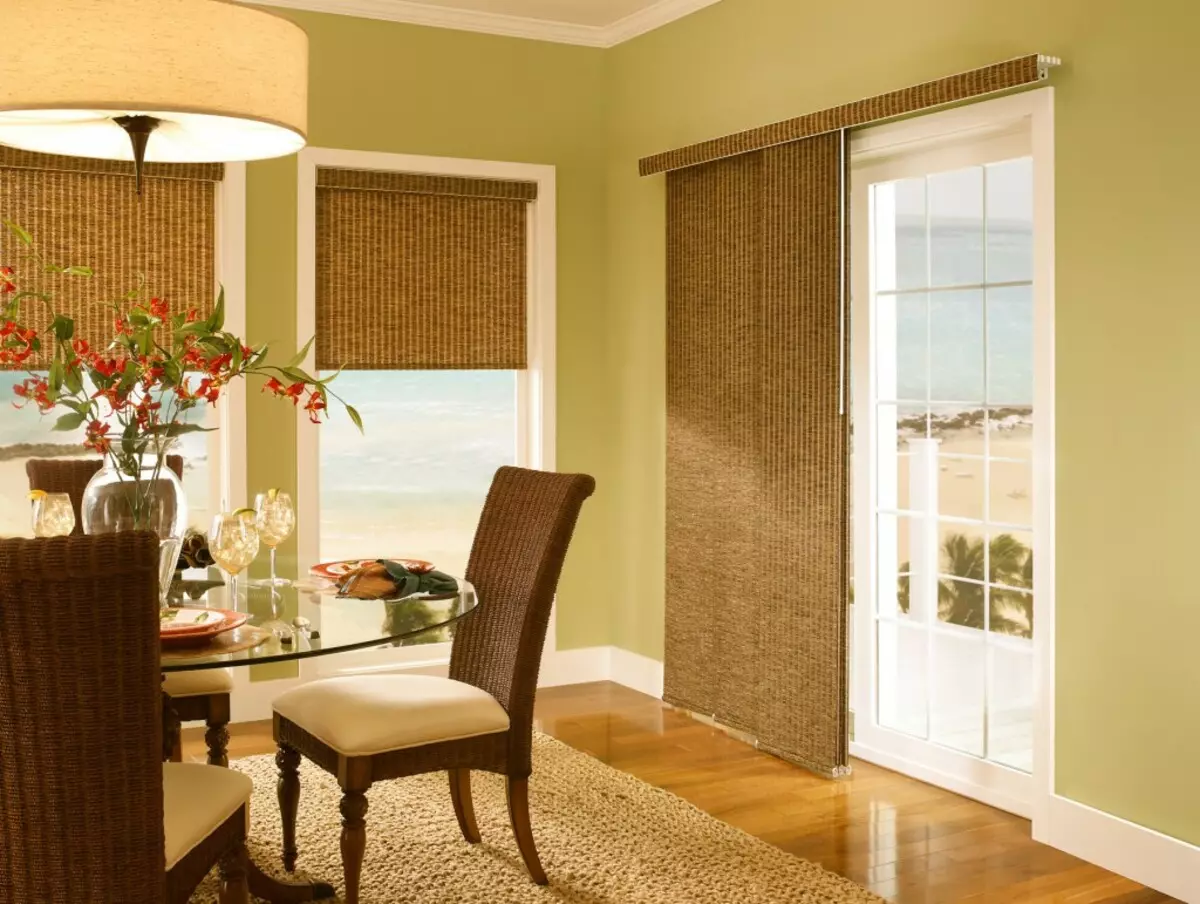
Those who want eclecticia, choosing tissues of different textures and colors for several cloths should only follow that they are harmoniously combined with each other and atmosphere in the room. The shape is well kept dense fabrics that are not stretched - flax, cotton, silk, cotton clutch, satin. With them in combination it is interesting to look at the panels from translucent chiffon, taffeta, moire or organza. Fabrics made of natural fibers attract less dust.
If the style in the interior is minimalist, choose a single-color cloth, a small pattern of geometric shapes, plant motifs.
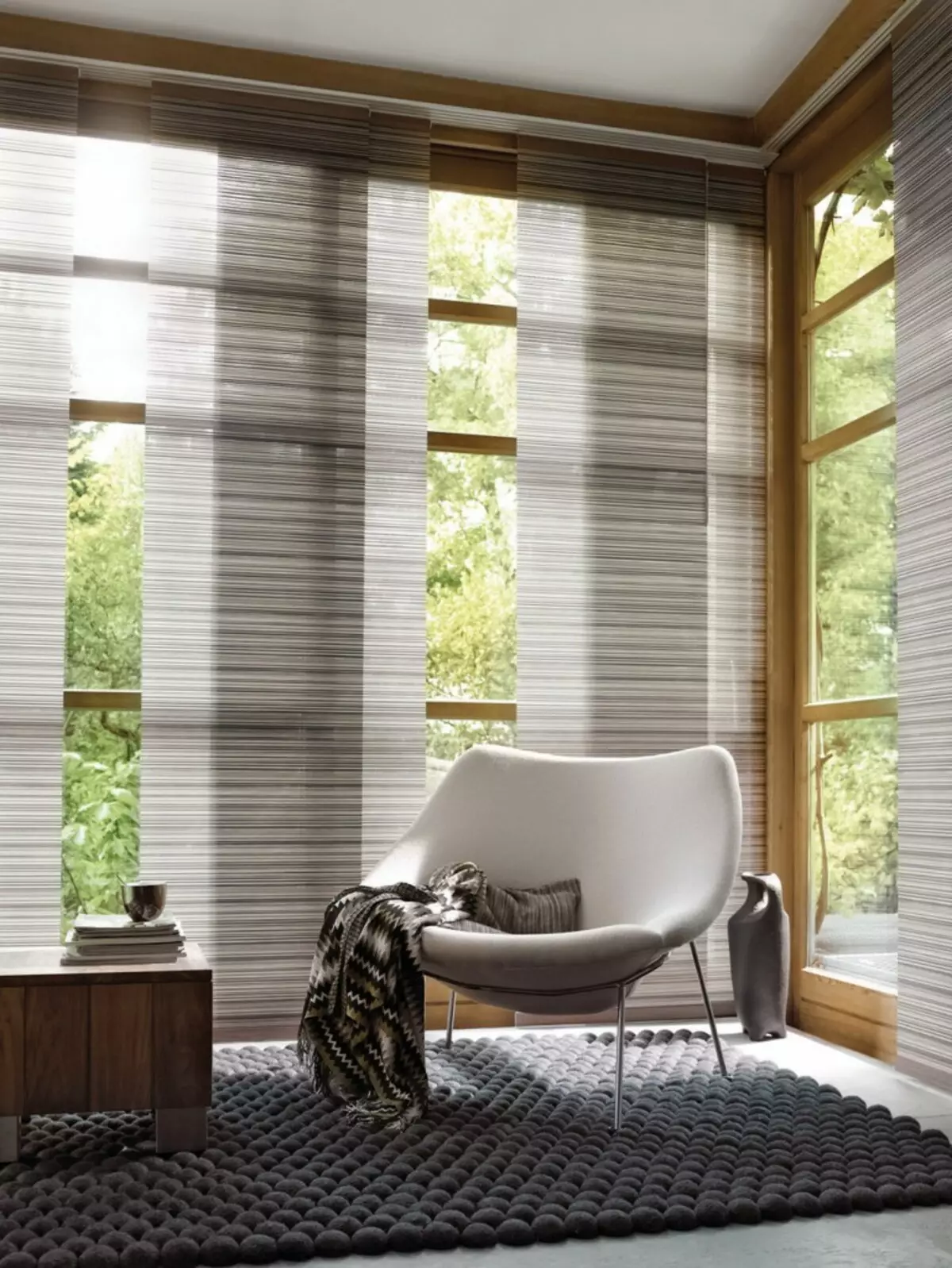
In all other cases, let's say a catchy print and bright colors. Japanese flavor will emphasize images of dragons and other mythical animals, birds, flowering sakura, hieroglyphs, ethnic ornaments. Panel curtains are pure canvas, but it is better to abandon the popular photo on the fabric recently. It is very important that she looks like a man-made. Written by paints or mascara landscape in the traditional style (bird flowers, mountain waters), on the contrary, is very appropriate.
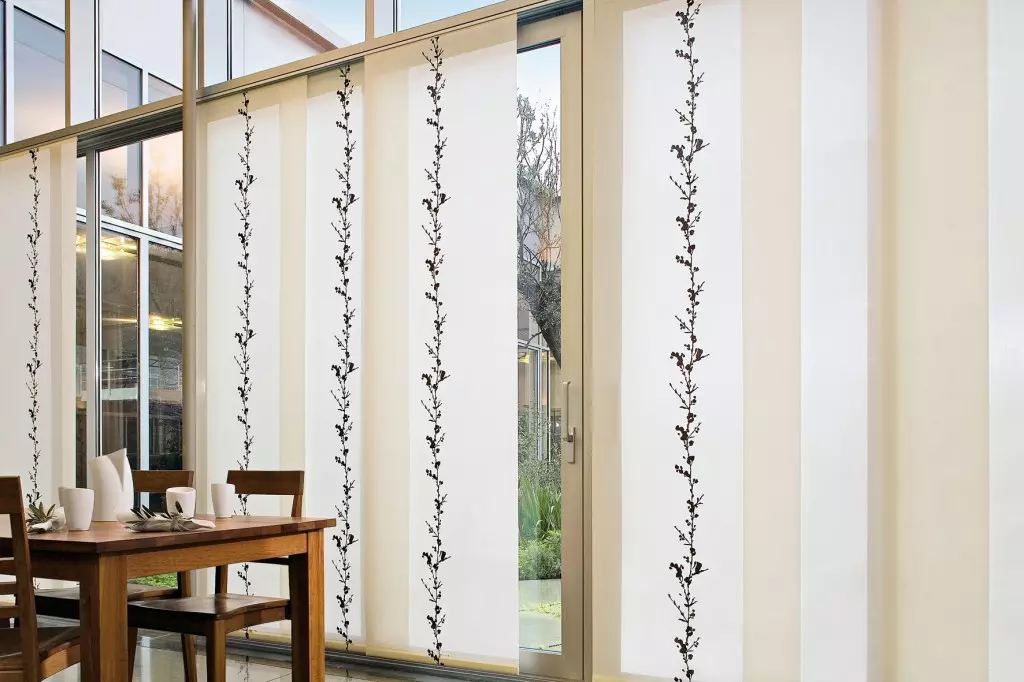
Interior style for curtains
Japanese curtains, besides what is needed in the traditional Japanese interior, perform an expressive detail in the style of Hi-Tech, Avangard and minimalism. Stressing the functionality, they will add elegance, without creating the impression of the clutter of space.
The simplicity of Japanese style in the interior is only visibility. It is necessary to thoroughly think about and competently dispose of accents, achieving such conciseness and expressiveness, elegant asceticism.
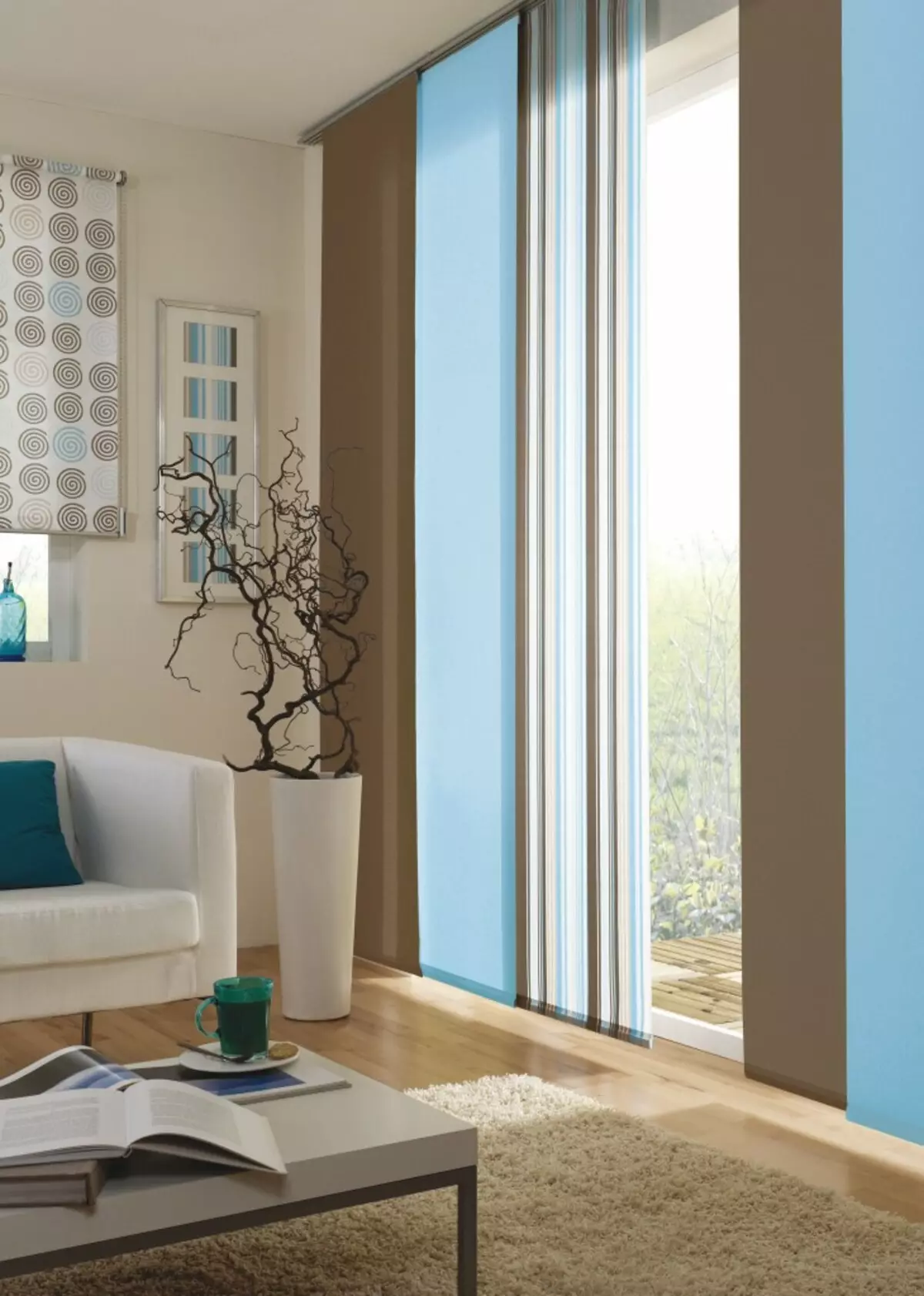
In this case, the design of the dwelling is better to entrust the professional designer. Everything must be sustained in a single style. Japanese curtains as an interesting detail will suit everyone who wants without much effort and costs to add an environment of originality and exotic or just hide something from prying eyes. Layout a few panels ladder or one-row, collect on one side or place on both sides of the window or hide everything for one of them. Especially good Japanese curtains look in spacious rooms with large windows. On narrow windows, one cloth is better not to hang - visually they will seem even less.
Remove massive furniture with a variety of drawers, shelves and other extra details from the room with Japanese curtains.
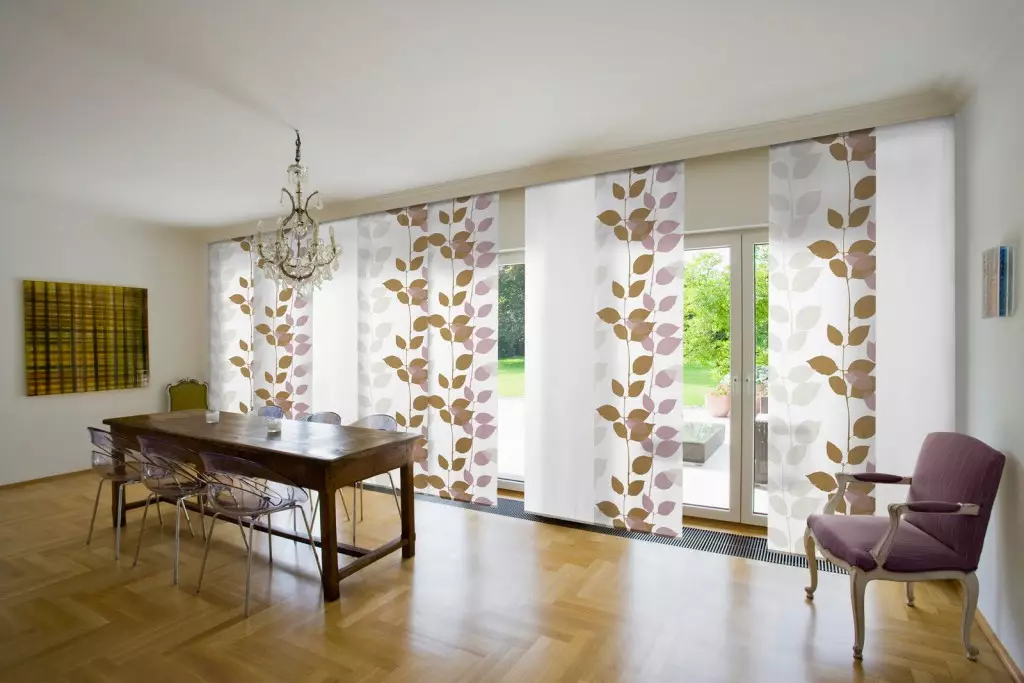
If you need to close a niche, extinguish a part of the space, it is difficult to find a solution despite more than Japanese curtains. In one-room apartment, the only room can be divided into a living room and a bedroom. In the nursery - to highlight the space for sleep, games and study. In the bedroom - to extinguish the similarity of Bouire. The kitchen is divided into "dining room" and a place for cooking. As for the kitchen, it is difficult to find the interior to which such curtains would not fit. Their practicality and simplicity will be there very by the way.
Article on the topic: Curtains and Tulle in the bedroom: Rules and details
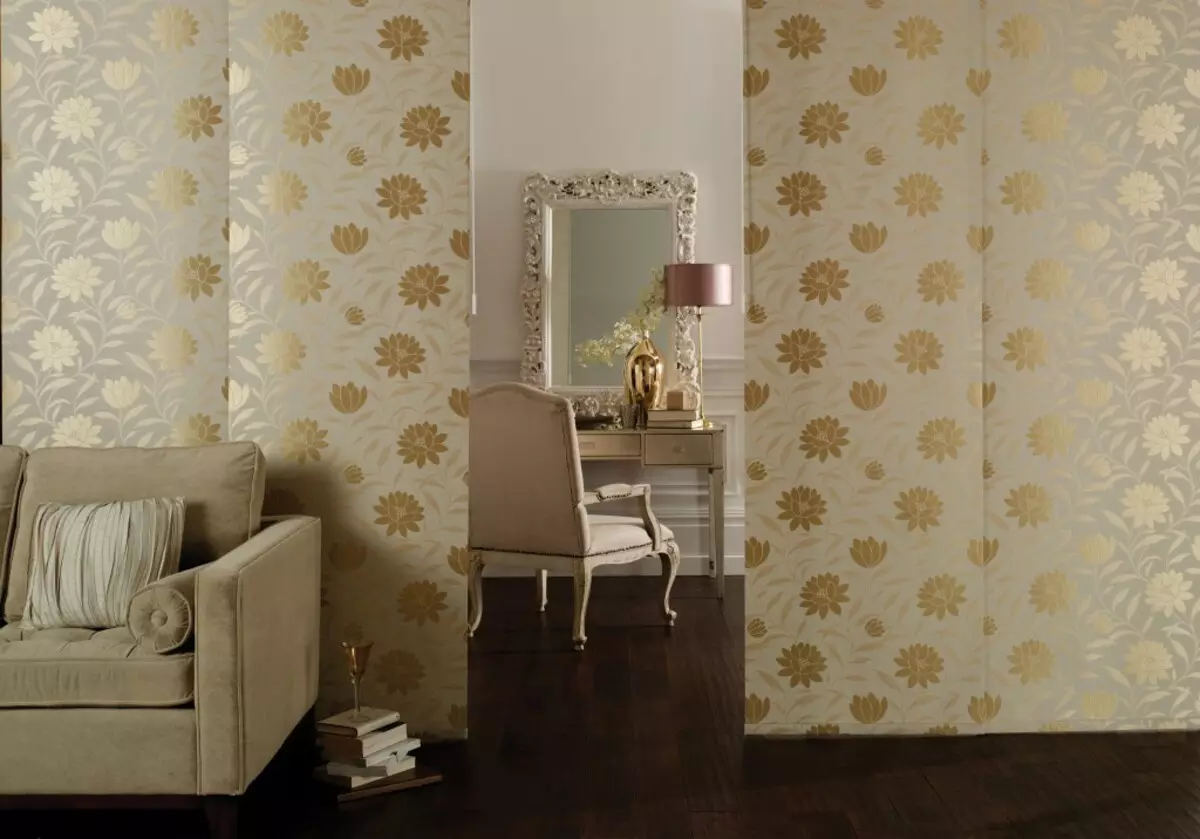
Two-three panel curtains of pastel tones, harmonizing with each other, will be appropriate in the bedroom. On one of them you can depict a traditional Japanese landscape. It is believed that thoughtful contemplation brings calm and leads to inner harmony. In addition, with insomnia, the Sakura flowers or flying geese are much more interesting than rams jumping through the hedge.
For kitchen, catchy prints, sharp contrasts, bright colors are undesirable. Japanese culinary tradition dictates complete concentration on the cooking process and food absorption.
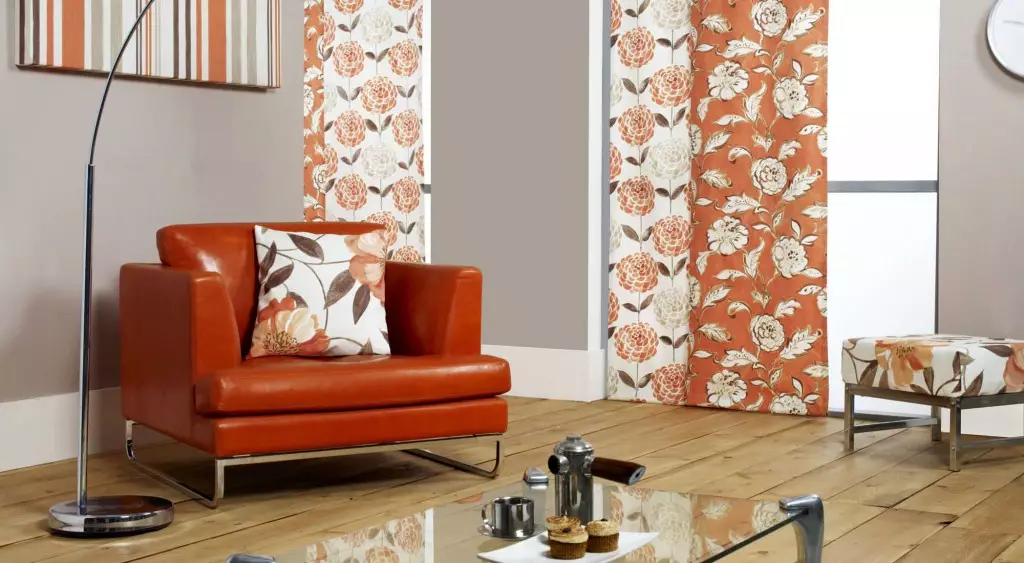
You can combine several screens from lungs and dense tissues or use smooth and flat material. It is even better for the kitchen natural materials - bamboo and straw. Since most often the kitchens do not differ in dimensions, the optimal length is to the windowsill. For spacious cuisine with a large window, you can think about the panels to the floor.
In the kitchen, unlike other rooms, choose material for curtains from synthetic tissues. It is easier to remove stains, fat, smells, couples from cooking are less entry.
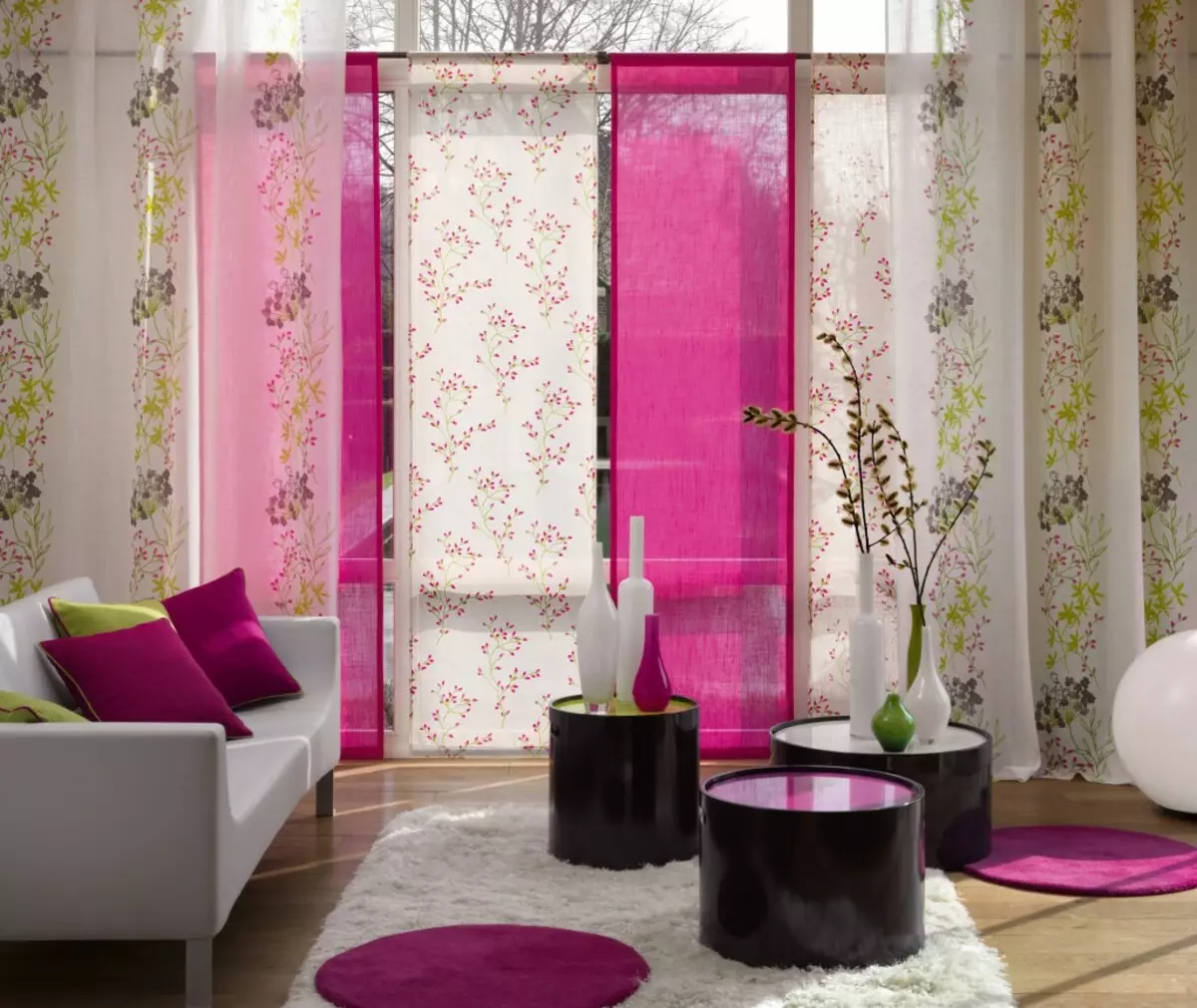
You are not mistaken, choosing in the kitchen colors found in nature - moss, peat, palm leaves, stone. For children, colorful cloth curtains of cheerful shades are suitable, combined with bright monophonic canvases. For the living room, consider the options for combinations of Japanese curtains with traditional draperies and tulle. You can completely sweat not only the window, but also the whole wall where it is located.
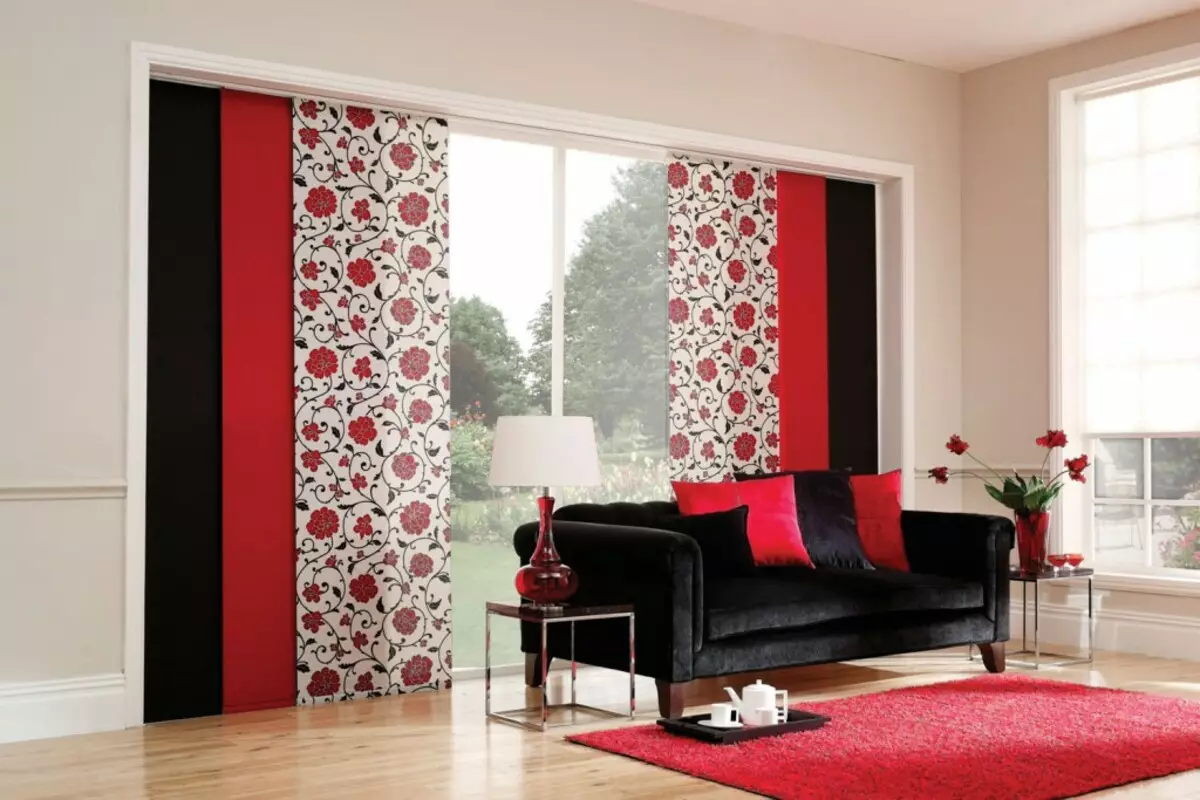
We sew curtains yourself
There is nothing complicated in this. Fabrics are presented in stores in the wide range of assortment. You can even find already outlined canvas with traditional Japanese ornaments and plots. The necessary fittings are sold in any construction store.
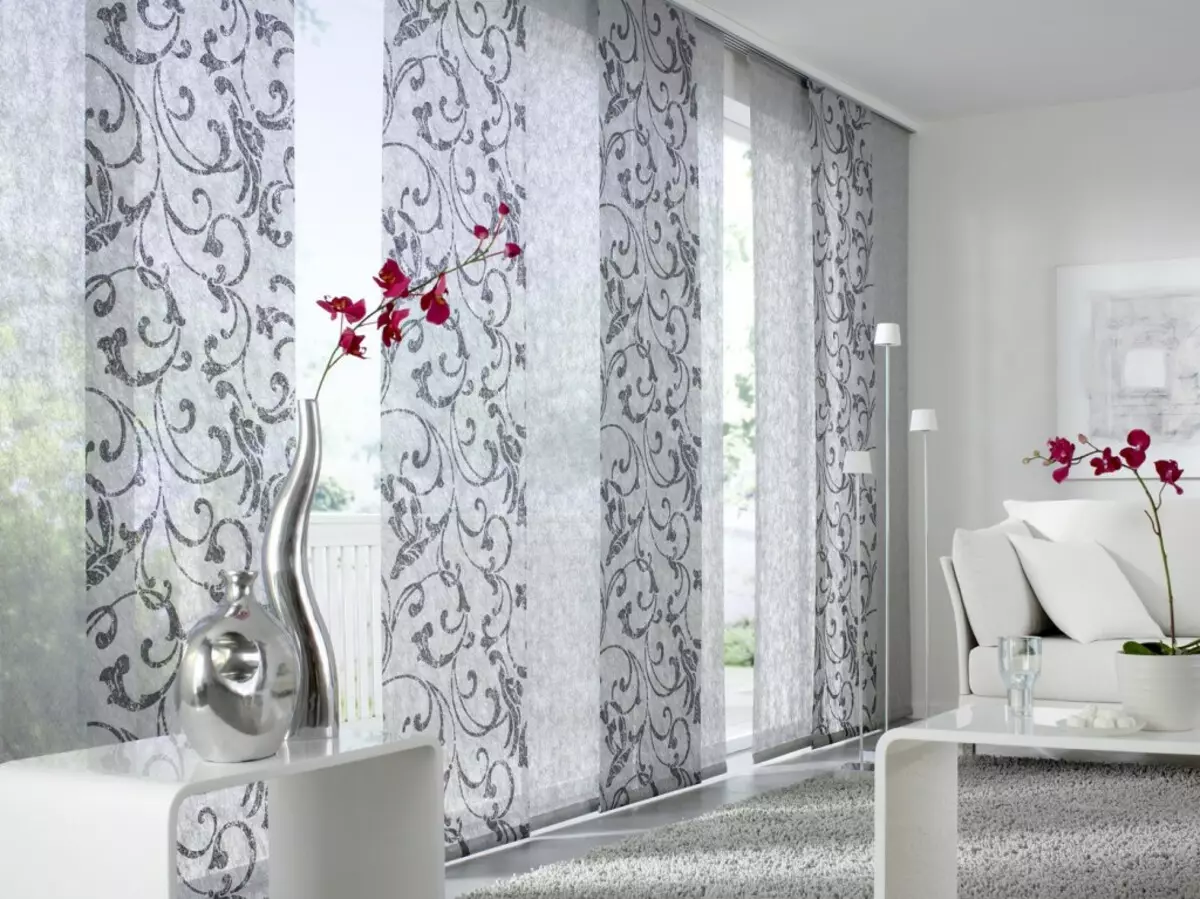
Japanese curtains - sew themselves:
- Count how many fabric you need, based on the fact that the average width of one panel is 60 cm. If you want them to overlap each other, add an additional 60 cm. Length is the distance from the eaves to the floor plus 10 cm on each side to the allowances .
- Cut the fabric to the strip of the desired width, taking into account the side allowances (3-4 cm on each side). First, make sutures on the sides. If the fabric is thin, plastic or fiberglass plates are inserted into them so that the hard framework turns out. Additionally, proof seams with flieselin or tape "Velcro", otherwise the edge will not be perfectly smooth. Carefully reveal.
- The cut is made to the back to insert a weight lipper, top - velcro. It is necessary to inflate it before you sew. Carefully fix the pins or stitches from the hand on the edge of the top cutting and perform the seam on the machine. Generate to the wrong one and will also be detecting.
- Plug the resulting canvas so that it does not live anywhere, and folds were not formed.
- Hang the curtains on the cornice and in the loss in the scene.
Article on the topic: Interior curtains: varieties and how to make it yourself
Video Gallery
Photo Gallery
